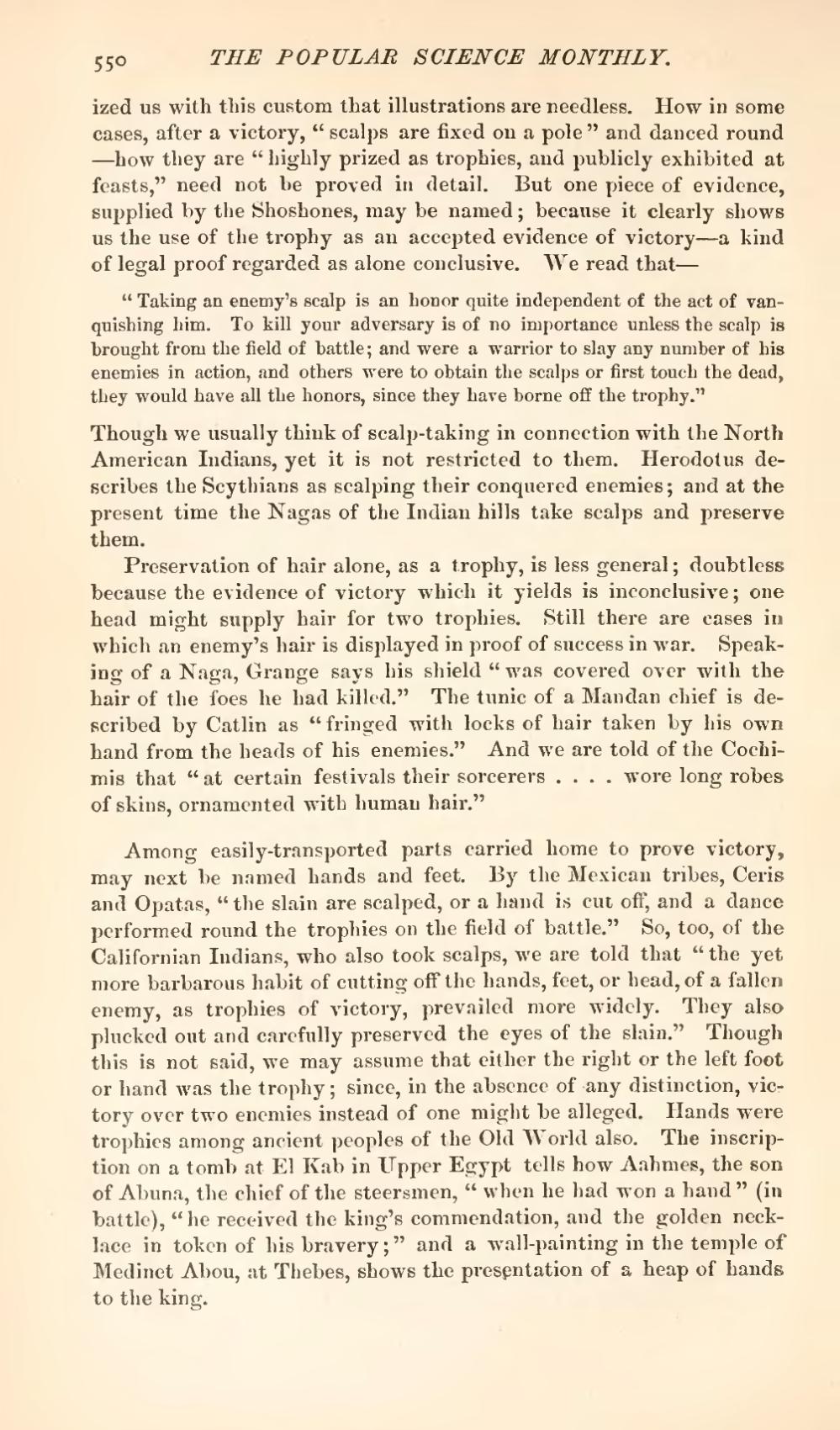ized us with this custom that illustrations are needless. How in some cases, after a victory, "scalps are fixed on a pole" and danced round—how they are "highly prized as trophies, and publicly exhibited at feasts," need not be proved in detail. But one piece of evidence, supplied by the Shoshones, may be named; because it clearly shows us the use of the trophy as an accepted evidence of victory—a kind of legal proof regarded as alone conclusive. We read that—
"Taking an enemy's scalp is an honor quite independent of the act of vanquishing him. To kill your adversary is of no importance unless the scalp is brought from the field of battle; and were a warrior to slay any number of his enemies in action, and others were to obtain the scalps or first touch the dead, they would have all the honors, since they have borne off the trophy."
Though we usually think of scalp-taking in connection with the North American Indians, yet it is not restricted to them. Herodotus describes the Scythians as scalping their conquered enemies; and at the present time the Nagas of the Indian hills take scalps and preserve them.
Preservation of hair alone, as a trophy, is less general; doubtless because the evidence of victory which it yields is inconclusive; one head might supply hair for two trophies. Still there are cases in which an enemy's hair is displayed in proof of success in war. Speaking of a Naga, Grange says his shield "was covered over with the hair of the foes he had killed." The tunic of a Mandan chief is described by Catlin as "fringed with locks of hair taken by his own hand from the heads of his enemies." And we are told of the Cochimis that "at certain festivals their sorcerers. . . . wore long robes of skins, ornamented with human hair."
Among easily-transported parts carried home to prove victory, may next be named hands and feet. By the Mexican tribes, Ceris and Opatas, "the slain are scalped, or a hand is cut off, and a dance performed round the trophies on the field of battle." So, too, of the Californian Indians, who also took scalps, we are told that "the yet more barbarous habit of cutting off the hands, feet, or head, of a fallen enemy, as trophies of victory, prevailed more widely. They also plucked out and carefully preserved the eyes of the slain." Though this is not said, we may assume that either the right or the left foot or hand was the trophy; since, in the absence of any distinction, victory over two enemies instead of one might be alleged. Hands were trophies among ancient peoples of the Old World also. The inscription on a tomb at El Kab in Upper Egypt tells how Aahmes, the son of Abuna, the chief of the steersmen, "when he had won a hand" (in battle), "he received the king's commendation, and the golden necklace in token of his bravery;" and a wall-painting in the temple of Medinet Abou, at Thebes, shows the presentation of a heap of hands to the king.
